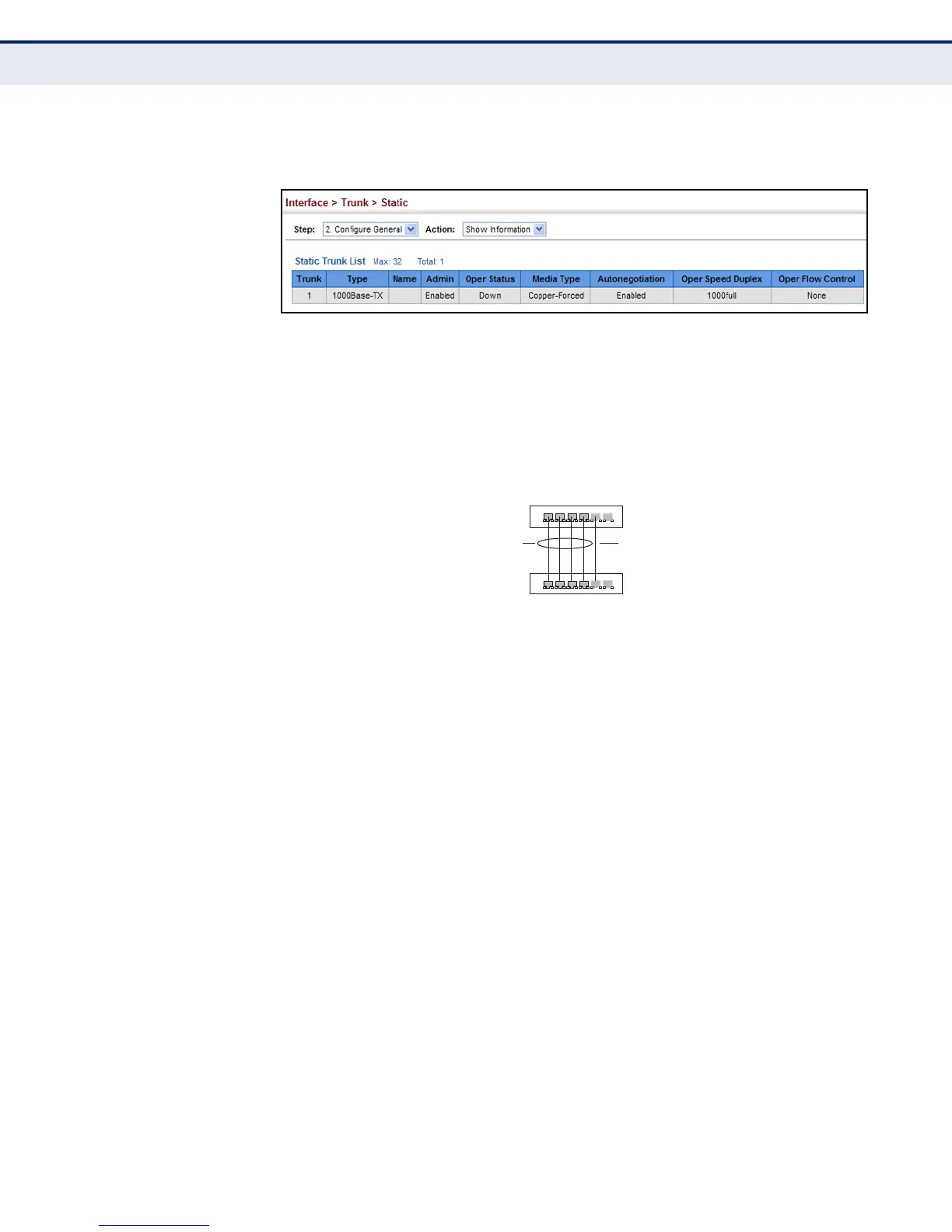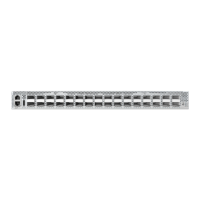C
HAPTER
5
| Interface Configuration
Trunk Configuration
– 139 –
3. Select Show Information from the Action list.
Figure 35: Displaying Connection Parameters for Static Trunks
CONFIGURING A
DYNAMIC TRUNK
Use the Interface > Trunk > Dynamic (Configure Aggregator) page to set
the administrative key for an aggregation group, enable LACP on a port,
and configure protocol parameters for local and partner ports.
Figure 36: Configuring Dynamic Trunks
CLI REFERENCES
◆ "Link Aggregation Commands" on page 787
COMMAND USAGE
◆ To avoid creating a loop in the network, be sure you enable LACP before
connecting the ports, and also disconnect the ports before disabling
LACP.
◆ If the target switch has also enabled LACP on the connected ports, the
trunk will be activated automatically.
◆ A trunk formed with another switch using LACP will automatically be
assigned the next available trunk ID.
◆ If more than eight ports attached to the same target switch have LACP
enabled, the additional ports will be placed in standby mode, and will
only be enabled if one of the active links fails.
◆ All ports on both ends of an LACP trunk must be configured for full
duplex, and auto-negotiation.
◆ Ports are only allowed to join the same Link Aggregation Group (LAG) if
(1) the LACP port system priority matches, (2) the LACP port admin key
matches, and (3) the LAG admin key matches (if configured). However,
if the LAG admin key is set, then the port admin key must be set to the
same value for a port to be allowed to join that group.
active
links
}
}
dynamically
enabled
configured
members
backup
link

